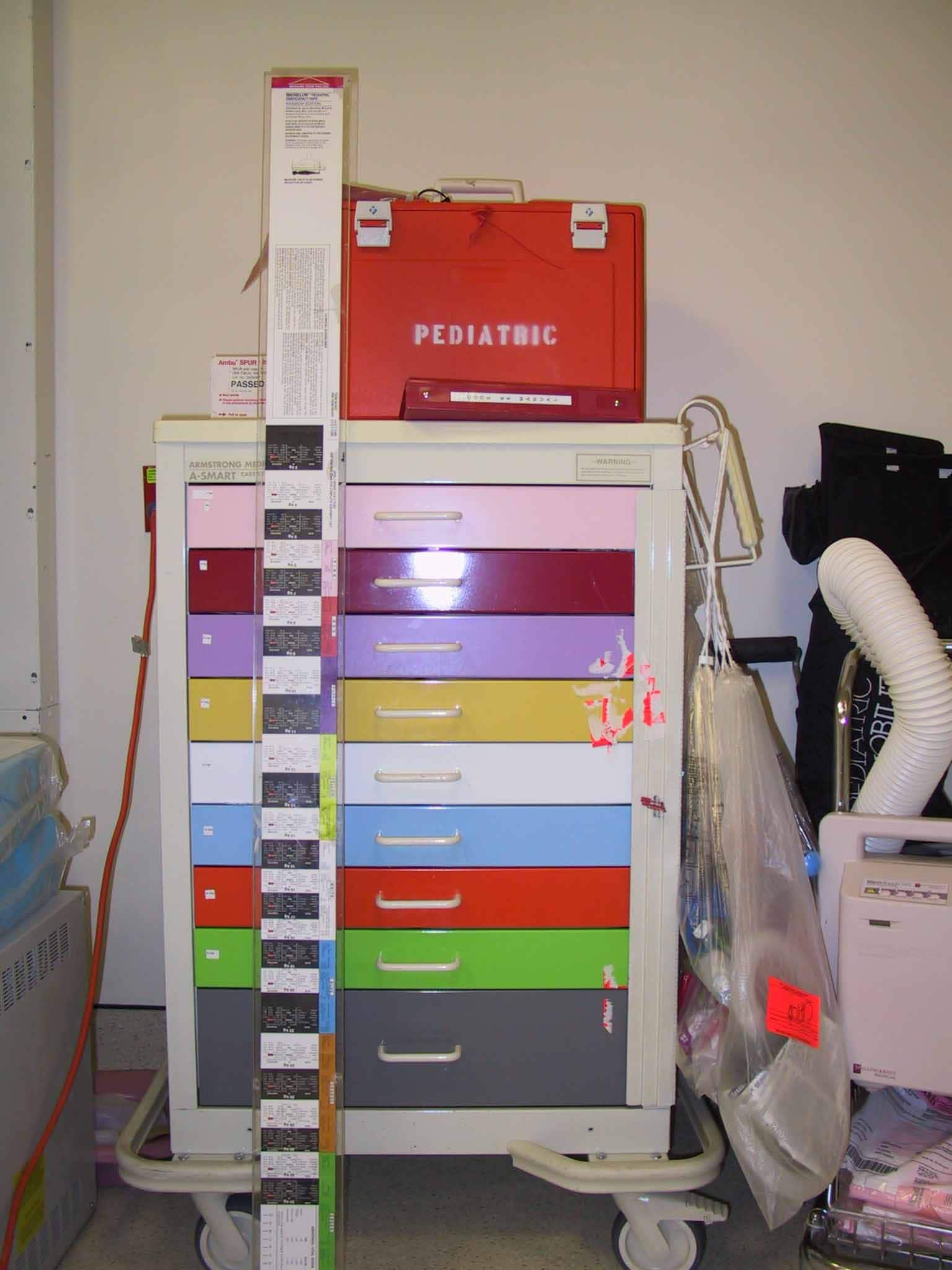

The blades used in pediatrics ranged from 00 (extremely premature neonates) to 4. The first one can be an adult or pediatric one, and the second can be straight or curved depending on the experience of the laryngoscopist. Adult sized for 5.5 tubes and beyond, pediatric ones for lower endotracheal tubes.

Other methods to calculate ETs size include comparing the child’s fifth finger with the internal diameter of the ET or by using resuscitation tape such as the Broselow Luten tape, and it is recommendable to have one size larger and smaller of the selected tube. On the other hand, the formula (child’s age/2) + 3.5 might be used for cuffed ETs. The correct size of these ETs can be calculated according to the equation (child’s age/4) + 4. Uncuffed ETs are mainly indicated for neonates, infants, and young children (<8 years). Bag used for infants and young children is named pediatric bag (which provides a tidal volume of approximately 400–500 ml) for older children and adolescents, an adult bag should be used (providing a tidal volume of 1000 ml). We must select the mask size that fits the nasal bridge and the chin of the patient without covering the eyes ( Figure 1). Patient with a reduction of mechanical load, as seen in shock state and some patients with cardiovascular dysfunction.Īn appropriate mask and bag for ventilation. Therefore, under this indication children should only be intubated in EXTREME CIRCUMSTANCES. We must remember that children can get intubated by this indication but it has been described an increase in mean airway pressure that may impede venous return. This obstruction is common in asthma and bronchiolitis. As lower obstruction progresses, dynamic hyperinflation and air trapping worsen, leading to a silent chest (inaudible breath sounds).

Hypercarbia, tachypnea, increased work of breathing, wheezing, and a prolonged expiratory phase are characteristic. Alteration in ventilation can also be secondary to muscle weakness, altered mental status, exposure to toxins, or iatrogenic oversedation. There exists a reduced lung compliance and a V/Q mismatch increasing physiologic dead space. The pathophysiologic phenomenon consists of alteration in ventilation. Some causes of hypoxia are airway obstruction, hypoventilation, ventilation/perfusion mismatch, hemoglobinopathies, abnormal pulmonary diffusion, and intracardiac right to left shunt. Clinically, the patient presents with respiratory distress, tachypnea, increased work of breathing, and an increase in alveolar-arterial gradient. One of the most common indications of ETI. Classically, we can find patients with a Glasgow Coma Scale (GCS) score of 8 or less, or a deterioration in the GCS score from 14 to 10. Patient with neurological dysfunction secondary to trauma, seizures, metabolic disease, or toxic ingestion. During childhood, the most common cause is infections. Some examples are: (a) upper airway infectious (CROUP, bacterial tracheitis, etc.), (b) traumatisms, (c) congenital syndromes accompanied with macroglossia or micrognathia, (d) cystic hygroma, (e) branchial cleft cyst, (f) thyroglossal duct cyst, and (g) those patients with a large anterior mediastinal mass (non-Hodgkin lymphoma, acute leukemia, etc.). In this category, integrity of airway is affected by different infectious, anatomical and neurological diseases. We include a section of devices that could help permeate the airway of pediatric patients with a difficult airway and recent results of studies conducted regarding the association between the level of previous training in pediatric ETI and success rates. In addition, we will discuss important anatomical particularities of the children’s airway. In this chapter, we will summarize the most practical recommendations of ETI technique in children. Airway’s management can be defined as the performance of maneuvers and the use of devices that enable a correct and safe ventilation to patients that need this care.Įndotracheal intubation (ETI) is one of the procedures that every physician attending critically ill pediatric patients must not only know but also getting the skills and experience necessaries to effectively perform.

Management and securing permeability of airway are mandatory in a critically ill child with severe trauma or any other situation that threatens his or her life.


 0 kommentar(er)
0 kommentar(er)
